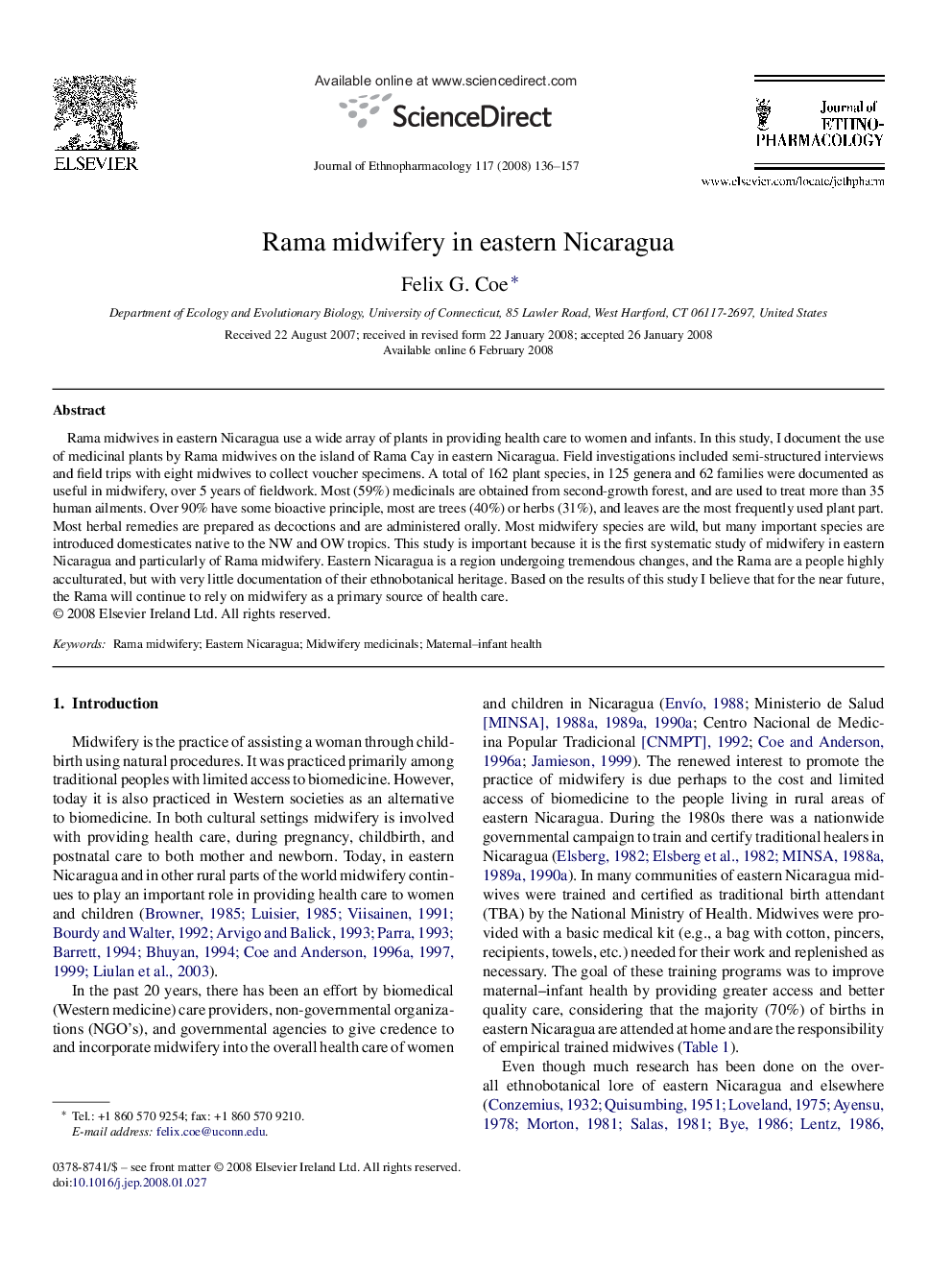| کد مقاله | کد نشریه | سال انتشار | مقاله انگلیسی | نسخه تمام متن |
|---|---|---|---|---|
| 2547073 | 1124045 | 2008 | 22 صفحه PDF | دانلود رایگان |

Rama midwives in eastern Nicaragua use a wide array of plants in providing health care to women and infants. In this study, I document the use of medicinal plants by Rama midwives on the island of Rama Cay in eastern Nicaragua. Field investigations included semi-structured interviews and field trips with eight midwives to collect voucher specimens. A total of 162 plant species, in 125 genera and 62 families were documented as useful in midwifery, over 5 years of fieldwork. Most (59%) medicinals are obtained from second-growth forest, and are used to treat more than 35 human ailments. Over 90% have some bioactive principle, most are trees (40%) or herbs (31%), and leaves are the most frequently used plant part. Most herbal remedies are prepared as decoctions and are administered orally. Most midwifery species are wild, but many important species are introduced domesticates native to the NW and OW tropics. This study is important because it is the first systematic study of midwifery in eastern Nicaragua and particularly of Rama midwifery. Eastern Nicaragua is a region undergoing tremendous changes, and the Rama are a people highly acculturated, but with very little documentation of their ethnobotanical heritage. Based on the results of this study I believe that for the near future, the Rama will continue to rely on midwifery as a primary source of health care.
Journal: Journal of Ethnopharmacology - Volume 117, Issue 1, 17 April 2008, Pages 136–157